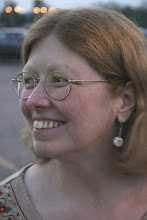 Caroline Leavitt’s new novel Pictures of You (Algonquin, 2011) is her ninth, and it seems her work is finally getting the recognition it deserves. Just released this month, Pictures of You is already in its third printing and is currently “Pennie’s Pick” by Costco book buyer Pennie Iannicello. As a longtime reader of Caroline’s blog, CarolineLeavittville, I eagerly awaited this book’s publication since back when she was still writing it with “Breathe” as the working title. Earlier this month, I had the pleasure every reader longs for when the complex characters pulled me into the world of their story in this beautifully written book. Caroline has just started out on her book tour, so be sure to check her schedule of upcoming appearances, and if you are going to the AWP Conference be sure to catch her on the Algonquin panel on Friday, February 4th at noon.
Caroline Leavitt’s new novel Pictures of You (Algonquin, 2011) is her ninth, and it seems her work is finally getting the recognition it deserves. Just released this month, Pictures of You is already in its third printing and is currently “Pennie’s Pick” by Costco book buyer Pennie Iannicello. As a longtime reader of Caroline’s blog, CarolineLeavittville, I eagerly awaited this book’s publication since back when she was still writing it with “Breathe” as the working title. Earlier this month, I had the pleasure every reader longs for when the complex characters pulled me into the world of their story in this beautifully written book. Caroline has just started out on her book tour, so be sure to check her schedule of upcoming appearances, and if you are going to the AWP Conference be sure to catch her on the Algonquin panel on Friday, February 4th at noon.WHAT WE CHOOSE TO SEE IN THE FOG IN PICTURES OF YOU
by Caroline Leavitt
I’ve always been fascinated by what we choose to believe, despite the facts that might be staring us in our surprised faces. We tell ourselves stories until they are as believable as the very truths we don’t want to accept. Deliberately, we keep ourselves in a fog.
My novel, Pictures of You, begins with a foggy landscape on a deserted road in Connecticut. There’s a mysterious car crash and the lives of four different people collide. There’s Isabelle, a photographer fleeing her philandering husband who’s gotten his girlfriend pregnant; there’s April, a wife and mother with a terrible secret; there’s asthmatic Sam with a secret all his own; and there is Charlie who is desperate to discover what his wife and son were doing in a car with a suitcase three hours away from home. I wanted to explore how we forgive the unforgivable, and whether or not it’s possible. I also wanted to ask how well do we really know the ones we love? And how do we choose to see those people?
The whole image of fog permeates the book, both literally and figuratively. The accident, of course, is in a terrible fog, so it’s impossible for anyone to know what really happened. In the fog, Sam sees Isabelle with what looks like a halo around her, and later, he remembers that fog, and he tells himself that she’s an angel, a conduit to his mother who has died in the accident. The photographs he later takes all look foggy, the images are blurred, and while Sam thinks he is seeing ghost photos of his mother, he refuses to allow himself to see the blurry images are anything other than the wrong setting, because then he will have to face the fact that his mother really has vanished and died, and he will have to grieve her.
Charlie stubbornly stays in this fog of love for his dead wife. His mother tells him that he has this habit of “seeing only what he wants to see,” that he never even realized that his parents’ happy marriage was not really that happy, that he refuses to look deeper into his relationship with his wife for fear that his life will go into upheaval. But despite evidence to the contrary, Charlie can’t believe the wife he adored was not whom he thought she was.
Isabelle talks a lot about what we see and believe. She knows how photographs, like life, can lie. What you see is not always what is really there in a photograph, and as she teaches Sam to take pictures, she urges him to look below the fog, to get under the surface, to look for the real meaning rather than just the meaning you hope is true.
This sense of fog also enters as breath—that mist of air—and in fact, I loved that image so much, that I originally called my novel Breathe. Sam is terribly asthmatic and he’s always being told to breathe more deeply, to expand his lungs. A friend revealed to me that when her daughters were sick, someone told her that “our breathing is our contract to stay on the earth. Without that breath, we die and we vanish.” That image stayed with me. I had April tell Charlie that Sam’s asthma might be his way of breaking his contract to stay on the earth with them, but she doesn’t know why. She kneels by his bed, listening to his breathing. She begs him, watching the mist in his oxygen tank, which of course, is a kind of fog: “Don’t leave. Please don’t leave.”
When I had filmmaker Chloe Reynolds do my book trailer, I knew what I wanted it to say, but the only visual input I had was to tell her, “Fog. I need lots and lots of fog.” She unfurled the fog in the trailer, so it sweeps through, clearing only so that you can see bits of what is there. She filmed it all in black and white, so there are even more shadows in the fog, more hidden meanings! That’s the way I wanted the novel to feel—a mysterious and intensely haunting fog, revealing more and more as the fog clears until it reaches what I hope is a shattering, unsettling conclusion.

Bio:
Caroline Leavitt is a novelist, essayist, book reviewer (The Boston Globe and People Magazine), and teacher (awarded the Outstanding Instructor Award in Creative Writing in the UCLA Extension Writers’ Program in 2004). Her essays and stories have appeared in Psychology Today, More, Parenting, Redbook, and Salon. She lives in Hoboken, New Jersey with her husband, the writer Jeff Tamarkin, and their teenage son Max.
















